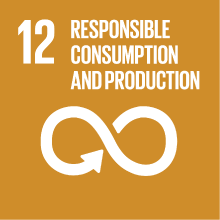ORGANIC CHEMISTRY 1 AND LABORATORY - MOD.1
- Academic year
- 2022/2023 Syllabus of previous years
- Official course title
- CHIMICA ORGANICA 1 E LABORATORIO - MOD.1
- Course code
- CT0333 (AF:374037 AR:203052)
- Teaching language
- Italian
- Modality
- On campus classes
- ECTS credits
- 6 out of 12 of ORGANIC CHEMISTRY 1 AND LABORATORY
- Degree level
- Bachelor's Degree Programme
- Academic Discipline
- CHIM/06
- Period
- 2nd Semester
- Course year
- 1
- Moodle
- Go to Moodle page
Contribution of the course to the overall degree programme goals
Expected learning outcomes
i) knowing how to draw the structure of an organic compound, starting from the proposed name (according to conventional or commercial nomenclature);
ii) knowing how to attribute the conventional or commercial name, starting from the proposed structure;
iii) use the appropriate scientific-technical terminology and symbology for the description of the behavior of simple molecules or their reaction mechanisms;
2. Knowledge and understanding
i) To know the characteristics of the main "functional groups" of organic chemistry;
ii) on the basis of the knowledge of "functional groups" to understand the mechanism of some fundamental reactions of organic chemistry;
2. Ability to apply knowledge and understanding
i) on the basis of the acquired knowledge, to foresee the possible interactions, the course, and the products of the reactions between different "functional groups";
ii) on the basis of the acquired knowledge, know how to foresee the preferential formation of specific products of the reactions among organic substances;
3. Ability to judge
i) knowing how to evaluate comparatively the effectiveness of different synthetic strategies, in terms of choice of reagents and reaction conditions;
ii) know how to roughly estimate between different organic synthesis strategies, which is preferable for human health and the environment;
5. Learning skills
i) knowing how to take notes identifying in an autonomous way the key notions expressed in class, making the speculative tools of scientific reasoning their own.
Pre-requirements
Contents
Program description, exam mode and bibliography.
- Alkanes
Description of the carbon-carbon bond according to the theory of the Valence Bond (VB) and Molecular Orbital (LCAO-MO). Graphic representations, IUPAC nomenclature. Isomers and conformers. Intermolecular interaction forces. Chemical-physical properties of alkanes.
- Alkenes Allenes Alkynes
Multiple carbon-carbon bonds according to the VB and LCAO-MO theory. Geometric isomerism. IUPAC nomenclature. Relative stability of (poly)unsaturated isomers. Physical-chemical properties of (poly)unsaturated compounds. Degree of unsaturation.
- Resonance
Resonance stabilization (VB and LCAO-MO theories). Mesomerism and Resonanting structures.
- Aromaticity
Aromatic stability (VB and LCAO-MO theories). Huckel's Rule. Aromatic, non-aromatic and anti-aromatic molecules. Circumference of Frost. IUPAC nomenclature. Correlation between mesomerism and aromaticity.
- Radical reactions
Reaction intermediates. Organic radicals: formation and stability. Radical reactions: initiation, propagation and termination. Alkane halogenation (regioselectivity). Radical hydrohalogenation of alkenes. Radical polymerization (stereochemistry). Benzylic bromination. Radical inhibitors.
- Acid-base equilibria
Thermodynamic quantities. Definitions of acid and base according to Arrehenius, Bronsted and Lewis. Concept of pKa and the prediction of spontaneity of an acid-base reaction. Solvents suitable for acid-base reactions. Speed of acid-base reactions. Chemical kinetics and catalysts.
- Functional groups 1
Halides, alcohols, thiols, ethers, epoxides, thioethers, amines: IUPAC nomenclature; chemo-physical properties; acidity and basicity.
- Halide reactions
Mono- and bi-molecular substitution reactions. Mono- and bi-molecular elimination reactions. Solvent effect. Nucleophilicity and basicity. Zaizev's Rule Regio- and stereo-selectivity.
- Chirality
Enantiomers. Graphic conventions (cones, easel, Newmann, Fisher). Absolute configuration according to the Cahn-Ingold-Prelog convention. Optical rotation and other physical and chemical properties of enantiomers. Diastereoisomers. Resolution of racemates. Importance of optical purity of enantiomeric compounds.
- Substitution and elimination reactions compared
Basicity and nucleophilicity. C, N, O, X, S Nucleophiles. Leaving groups (water, halides, sulphonic esters). Reactivity of epoxides (in basic or acidic conditions) and aryl ethers.
- Addition reactions
Addition-elimination balance. Addition of halogens, water, hypohalogenic acids, halogens. Red-Ox of alkenes. Addition to alkynes
- SEA reactions
Halogenation. Nitration. Sulphonylation. Alkylation. Acylation. Diazotization. Effect of substituents.
- Carbonyl compounds (aldehydes and ketones)
IUPAC nomenclature; chemo-physical properties; acidity and basicity. Keto-enol tautomerism. Condensation: hydration, cyanidation, (thio)acetals, enamines, imines, oxymes, hydrazones and azines.
- Carboxylic compounds (acyl halides, anhydrides, carboxylic acids, esters, amides, nitriles)
IUPAC nomenclature; chemo-physical properties; acidity and basicity. Relative stability. Acyl substitution reactions. Reactions of acyl chlorides, anhydrides, carboxylic acids, esters, amides (all possible interconversions).
Referral texts
BROWN, W. H.; FOOTE, C. S. "Organic Chemistry"
BRUICE, P. Y. "Organic Chemistry"
McMURRY, J. "Organic Chemistry"
Assessment methods
Mandatory conditions for access to the written and oral exam are:
1) the presence of at least 7 out of 8 laboratory sessions of the "Course of Organic Chemistry 1 and Laboratory - Module 2";
2) the delivery of all 8 tests of the laboratory experiences of the "Organic Chemistry 1 and Laboratory - Module 2" by the working group.
The written test consists of a series of exercises on the entire program (see content section), aimed at ascertaining the knowledge and skills acquired in solving simple problems of organic synthesis and through the correct reaction mechanism. During the written test lasting about one hour, the use of books, notes and electronic media is not permitted. In the "moodle" platform of the University the written tasks of the past years are present and downloadable, in order to exercise in the resolution of the tests.
Except in exceptional cases, the oral exam is held the day after the written exam, according to the calendar scheduled by the University.
The oral exam consists of a series of questions to which the student must answer proving to know the topics of the entire program (see content section) with properties of language and use of the correct chemical symbology. The oral exam lasts from 15 to 30 minutes, due to the clarity and consistency of the answers given to the questions asked.
The final score of the exam is evaluated mainly (80-85%) based on the outcome of the written test, while the evaluation of the oral test is to supplement (in positive or negative) the written test score.
Type of exam
Teaching methods
Further information
The Course "Chimica Organica 1 e Laboratorio" is the sum of:
Corso di Chimica Organica 1 e Laboratorio - Modulo 1 (theory)
Corso di Chimica Organica 1 e Laboratorio - Modulo 2 (practice)
Accommodation and support services for students with disabilities and students with specific learning impairments: Ca’ Foscari abides by Italian Law (Law 17/1999; Law 170/2010) regarding support services and accommodation available to students with disabilities. This includes students with mobility, visual, hearing and other disabilities (Law 17/1999), and specific learning impairments (Law 170/2010). In the case of disability or impairment that requires accommodations (i.e., alternate testing, readers, note takers or interpreters) please contact the Disability and Accessibility Offices in Student Services: disabilita@unive.it.
2030 Agenda for Sustainable Development Goals
This subject deals with topics related to the macro-area "Circular economy, innovation, work" and contributes to the achievement of one or more goals of U. N. Agenda for Sustainable Development


